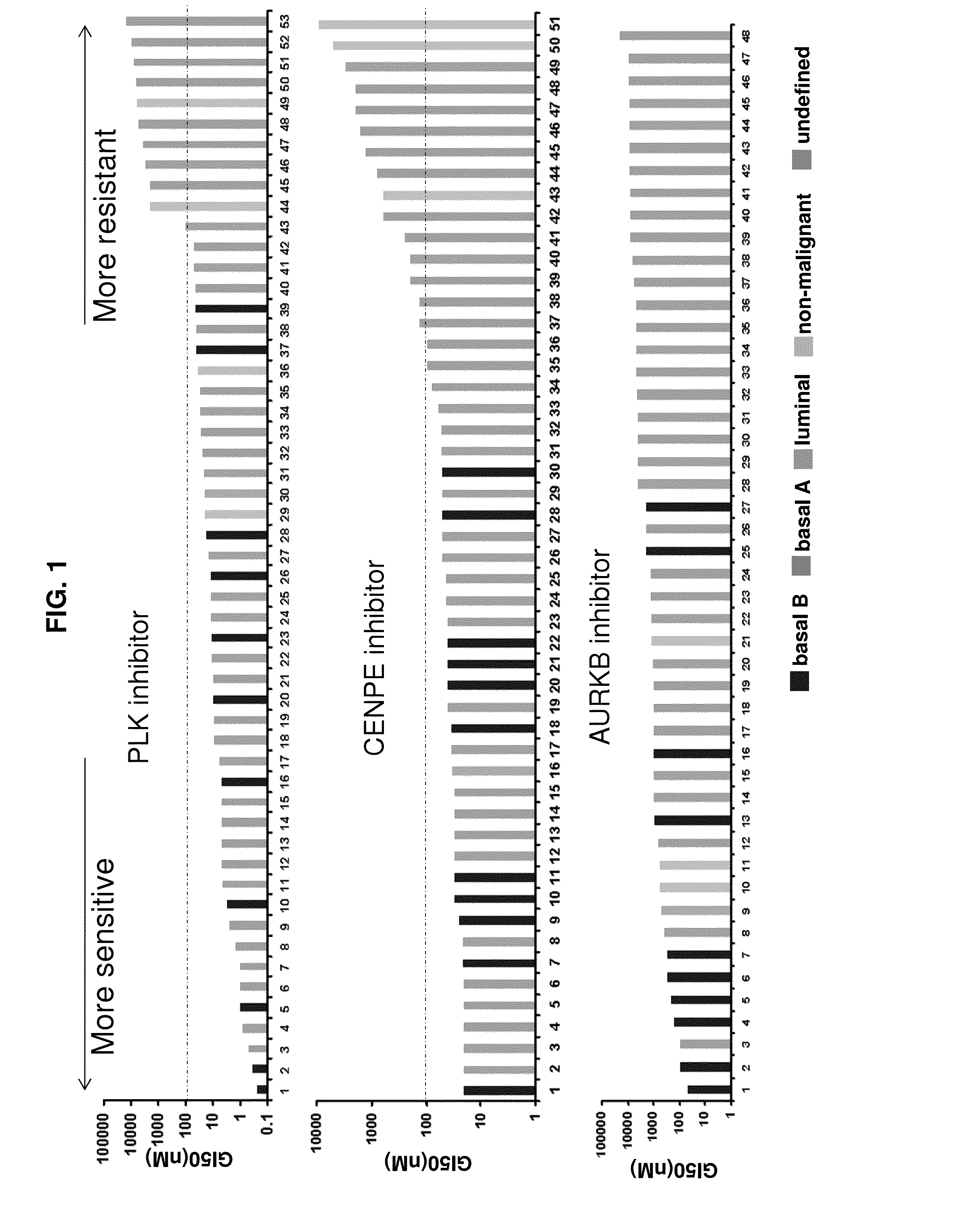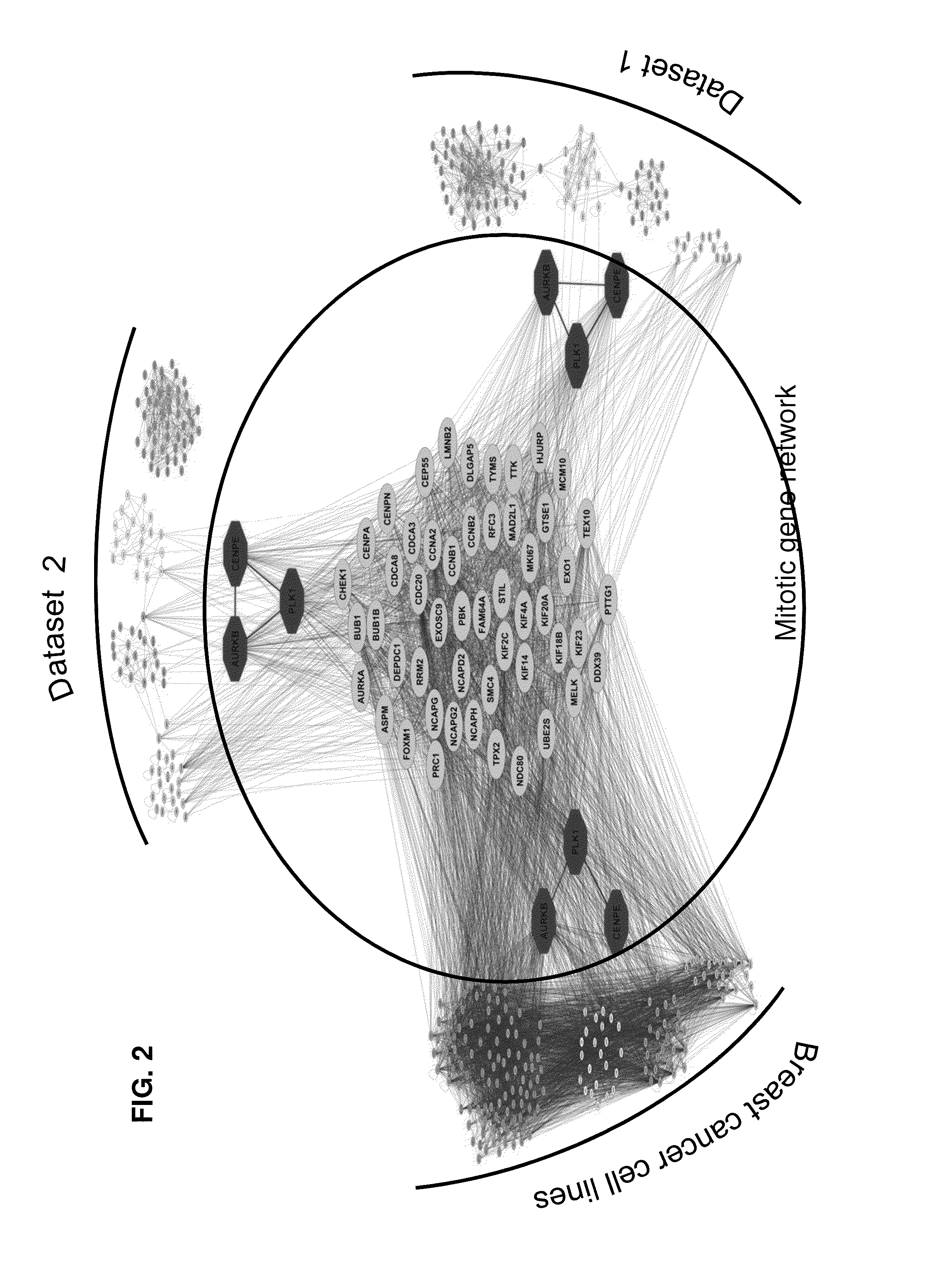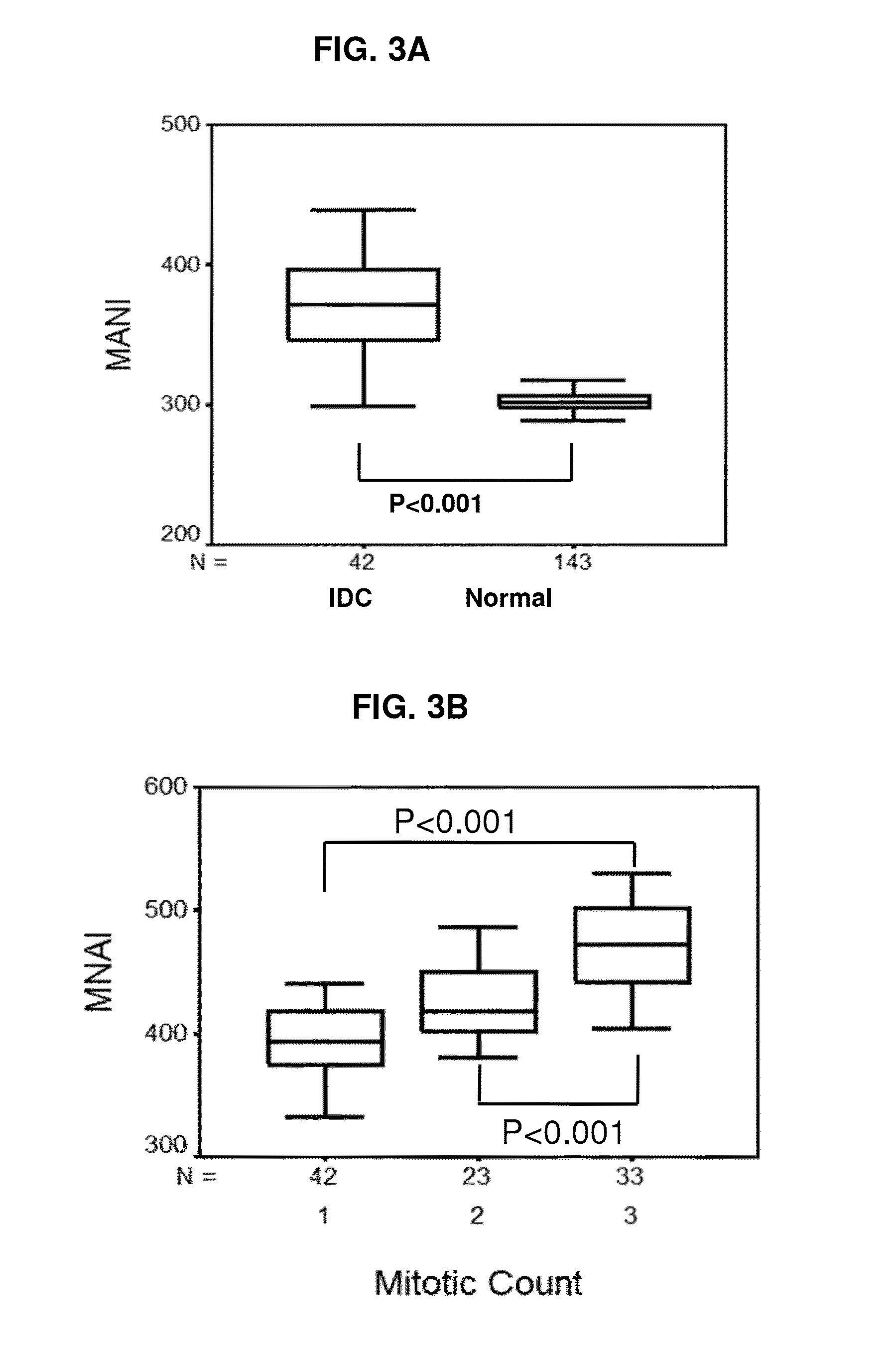Cancer Specific Mitotic Network
a mitotic network and cancer technology, applied in the field of gene profiling, can solve the problems of chromosome damage, process failure, and chromosome damage, and achieve the effects of increasing mitotic activity, increasing genome instability, and carcinogenesis and tumor progression
- Summary
- Abstract
- Description
- Claims
- Application Information
AI Technical Summary
Problems solved by technology
Method used
Image
Examples
example 1
Materials and Methods for Finding the Mitotic Network Genes
[0223]Cell culture: Human non-malignant and breast cancer cell lines have been established from normal and human breast cancer samples. The cell lines described in this study derived from 49 malignant and 4 non-malignant breast tissues and growth conditions for the cell lines have been reported previously This resource consists of nearly 54 well-characterized breast cell lines with information on genomic and gene expression signatures. The cell incubational condition of the cell lines was shown previously by some of the inventors in Neve, R. M. et al. Cancer Cell 10, 515-527 (2006).
[0224]Preparation of Compound: The small-molecule inhibitors for PLK1 (GSK461364), CENPE(GSK923295) and AURKB (GSK1070916) were provided by GlaxoSmithKline, Inc. Stock solutions were made at a concentration of 10 mM in DMSO and stored at −20° C. Compounds were diluted (1:5 serial dilution) to produce test drug concentrations ranging from 0.0768 nM...
example 2
Knockdown Studies of Mitotic Network Genes
[0230]We transiently transfect siRNA for MELK, SMC4, TEX10, AURKA, HJURP, BUB1, RFC3, and CCNB2 into MDAMB231 and BT549 breast cancer cell lines. Non-specific siRNA served as a negative control. Cell viability / proliferation was evaluated by CellTiter-Glo® luminescent cell viability assay (CTG, Promega), cell apoptosis was assayed using YoPro-1 and Hoechst staining and cell cycle inhibition was assessed by measuring BrdU incorporation. All cellular measurements were made in adhered cells using the Cellomics high content scanning instrument. All assays were run at 3, 4, 5 and 6 days post transfection.
[0231]siRNA transfection and efficiency of knockdown: siRNAs targeting mitotic genes (two siRNAs targeting different sequences of each gene) and AllStars Negative Control siRNA were purchased from Qiagen Inc. The AllStars Negative Control siRNA, which has no homology to any known mammalian gene is the most thoroughly tested and validated negative ...
example 3
Detection of a Mitotic Network Gene in a Patient for Prognosis
[0237]A patient biopsy is taken from a tissue such as breast and immunohistochemical analysis is performed using a monoclonal antibody to a mitotic network gene from Table 4 or 5. A positive level or increased level of expressed protein of the mitotic network gene indicates that the patient tissue likely contains malignant cells of basal subtype. The patient prognosis can be determined as possibly poor and the clinician advised so that aggressive treatment can be administered.
PUM
 Login to View More
Login to View More Abstract
Description
Claims
Application Information
 Login to View More
Login to View More - R&D
- Intellectual Property
- Life Sciences
- Materials
- Tech Scout
- Unparalleled Data Quality
- Higher Quality Content
- 60% Fewer Hallucinations
Browse by: Latest US Patents, China's latest patents, Technical Efficacy Thesaurus, Application Domain, Technology Topic, Popular Technical Reports.
© 2025 PatSnap. All rights reserved.Legal|Privacy policy|Modern Slavery Act Transparency Statement|Sitemap|About US| Contact US: help@patsnap.com



